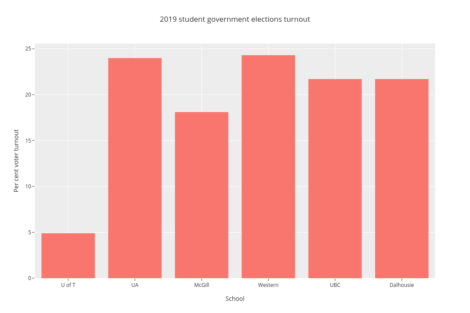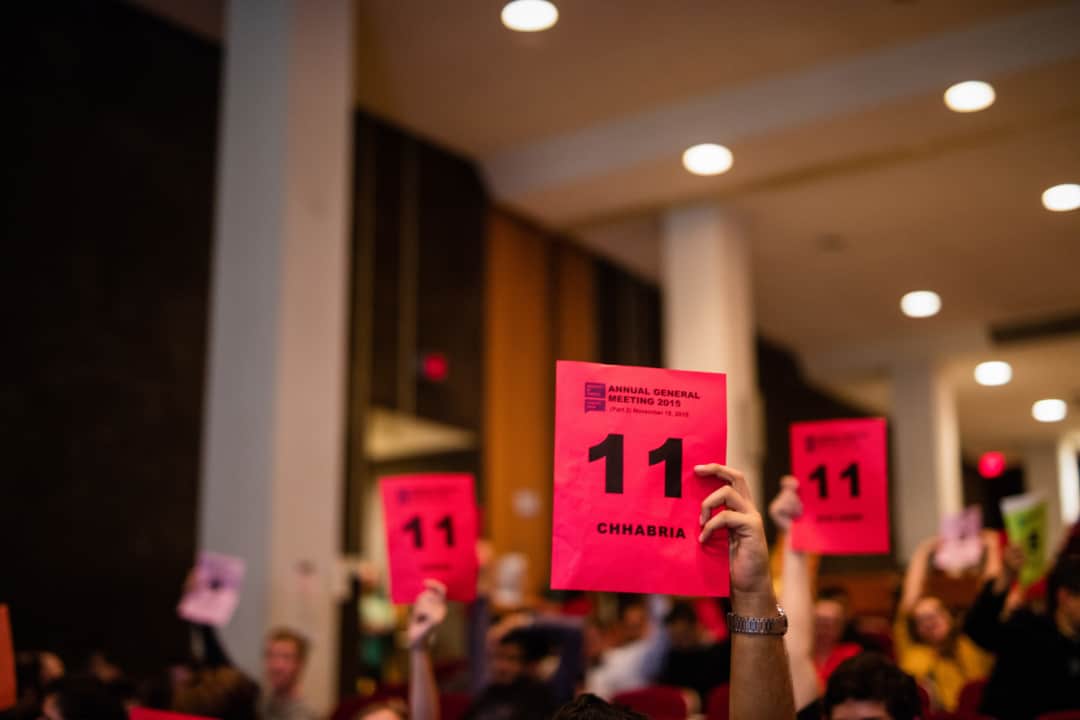As the University of Toronto Students’ Union’s (UTSU) Annual General Meeting has now lost quorum two years in a row, and its voter turnout in the last general election was 4.2 per cent, it seems the UTSU is experiencing a pattern of low democratic participation. The 2019 spring general election saw three executive positions and 18 director positions go unfilled, and the resulting by-election saw a voter turnout of 2.9 per cent. The UTSU is the highest student government body at U of T, with responsibilities such as advocacy and lobbying university administration and local government.
Although low participation in student government elections isn’t something that’s unique to U of T, there is a question as to whether U of T is an outlier.
The spring 2018 UTSU election saw the highest voter turnout of the past four years at 25.3 per cent, in part due to the U-Pass referendum. Although the majority of those present abstained from voting in all executive elections, the referendum had a 97.6 per cent participation rate.

WILL XIAO/THE VARSITY
However, low voter turnout in student government elections does not seem to be the norm in all Canadian universities.
In the general elections for the Students’ Society of McGill University (SSMU), voter turnout averaged 25.2 per cent for 2013–2019, nearly double the average of the UTSU’s general elections from 2016–2019, which was 12.8 per cent.
The University of Alberta Students’ Union, which has been tracking its voter turnout since 2006, has an overall average of 21.8 per cent, and an average of 25 per cent from 2016–2019. University of Alberta (U of A) also tracks voter turnout by program, something that neither U of T or any other university does. This data shows that the highest voter turnout comes from the Faculté Saint-Jean, the French-language faculty, as well as the science and pharmacy faculties.
The University of British Columbia’s (UBC) Alma Mater Society saw an average of 22.1 per cent voter turnout from 2013–2019, excluding the 2015 and 2016 separated referendum elections. In 2015 and 2016, the general elections were separated from the referenda, leading to a significant drop in election participation. The 2015 and 2016 general elections saw voter turnouts of 12.9 and 12.5 per cent respectively. In 2017, participation jumped back up to 20.7 per cent as the general elections were combined once more with referenda.
In 2019, of seven Canadian universities, voter turnout in the SSMU general election exceeded by four times more than in the UTSU election, and over five times more in the general elections for the student societies of UBC, U of A, Carleton University, Dalhousie University, and Western University.
UTSU President Joshua Bowman affirmed that voter turnout at U of T is a problem, and that the Elections and Referenda Committee (ERC) is looking for solutions. “In my opinion, it’s not enough to simply ramp up engagement around election time,” wrote Bowman to The Varsity. “We’ve been trying to reach out to students throughout our term… We want students to know that their concerns are our priority, and not just when we’re asking for their participation in our elections.”
“I want to incentivize students to vote, period.”


